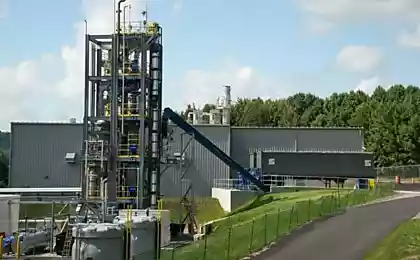838
Why technology 40-year-old air traffic control?

At any time in the airspace of the United States is about 7,000 aircraft. In the past 40 years the same computer systems used for air traffic control, writes a > Wired. This relic of the 70s known Host - pattern of obsolete equipment, from which simply can not refuse.
Host Key modules developed before the advent of the Global Positioning System GPS, so the Host uses ground radar to determine the coordinates of each aircraft.
"Every day, thousands of passengers are activated in their GPS-smartphones" flight mode ", and their flight controls technology developed before Depeche Mode», - writes Wired.
In fact, it looks incredible. The passenger can determine your location more accurately than navigation system installed in the control room, where the team is sent to the pilot.
Although Host system is quite safe, but terribly inefficient. It handles a limited number of traffic controllers and did not see anything beyond the reach of its own radar. When the plane goes into the next segment, it just disappears from the field of view. Because of this dispatch centers may not insure each other. If one of them suddenly lost power, we have to completely shut down air traffic in the area, as happened September 26, 2014 in Chicago, when a local officer decided to commit suicide, before staging a fire in the server room. As a result, airlines had to cancel flights in 6600 for 17 days.
The Federal Aviation Administration (FAA) is well aware of the problem and has 11 years of trying to implement a series of incremental upgrades in the project NextGen. This is a new computer system, by which each manager will be able to watch every aircraft in the airspace of the United States. In theory, this would allow one center traffic management to insure the other.
But in reality, the introduction of NextGen turned into a nightmare, with a mass of delays, audits and unexpected problems. Lockheed Martin Corporation began developing software in the distant 2002 and was supposed to end in 2010.
In 2007, the system was subjected to a series of tests and found a huge number of bugs. She is confused and flying airplanes and aircraft sometimes completely disappear from the screen.
Lockheed Martin has tried to fix bugs, but a program continues to fail. In April 2014, the system collapsed in the Mission Control Center in Los Angeles, when the airspace flew spy plane U-2 at an altitude of 18,000 meters, twice the height of the passenger planes that brought down the logic of NextGen.
The next deadline for NextGen installed in the spring of 2015: five years later and was originally planned date in excess of the project budget by $ 500 million, writes Wired.
Perhaps even now everything goes smoothly. But even in this case the infrastructure air traffic control centers are not ready to use the new software. We need to change the link. FAA has no plans to implement communications based on VoIP until 2018. Even in the best case, dispatch centers will not be able to track all planes by GPS earlier than 2020.
Source: geektimes.ru/post/246546/























